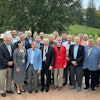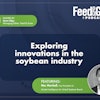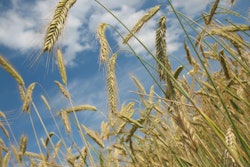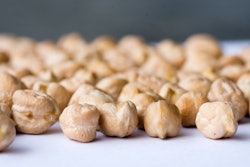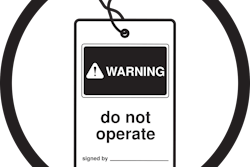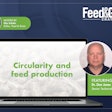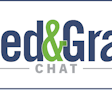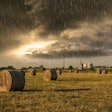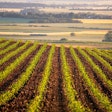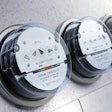Transcription of Feed & Grain Chat withJax Williams, PhD, Business Development Manager for trinamiX North America.
Schafer:Hi everyone, welcome to Feed & Grain Chat. I'm your host Elise Schafer, editor ofFeed & Grain. This edition of Feed & Grain Chat is brought to you byWATT Global Mediaand Feedandgrain.com.Feedandgrain.comis your source for the latestnews,product and equipmentinformation for the grain handling and feed manufacturing industries.
Today, I'm joined on Zoom by Jax Williams, PhD, Business Development Manager fortrinamiX North America. She's here today to discuss animal feed applications for handheld NIR devices. Hi, Jax, how are you?
Williams:I'm good. How are you?
Schafer:I'm doing well. Thanks for coming on today!
Williams:No, thank you for having me, as well.
Schafer:Can you explain the science behind NIR Analysis and some of the options that are available today?
Williams: Yeah, I think in order to understand how it works, we can kind of just take a step and understand what it is. So, to give you an example, if you're going to learn anything from today, it’s the fact that if we think of our eyes sensing the light, then we see an image, and NIR is exactly the same. It's just a set of using your eyes and your brain, when you put it into either abenchtopor aninline sensoror something handheld.
Near infrared technology has been used probably since the 1800s, and now all the way to today. But the fact is you have a sensor, so a piece of hardware that emits a light, and that light goes through your material, your material then can bounce back that information to your sensor. And that sensor, with some type of other analytics called calibrations, will then give you information. At the end of the day, you're getting information from light and matter to get something useful. That's kind of what it boils down to, is what you see is getting quantified with a device.
I hope that was from my perspective, a little tidbit of kind of what I would say NIR is, but if we wanted to dive in a little bit more, as in, okay, we have a benchtop NIR, we have a handheld, we have an inline, what does that mean? What, I don't understand? Well, at the end of the day, it's going to come down to the application, and you'll go, what do you need? What do you need to measure? Do you need to measure the color of something? Is it red, is a blue? Do you need to measure this grain of corn, like what's in it, what is inside of this, how much starch is in there? And that's going to come down to the type of tool you need for your operation.
If you want to measure it fast, if you want to measure it slow, and also cost versus performance, some of these instruments are $100,000. And some of them are $1,000. And so the $1,000 instrument is not going to outperform the $100,000 instrument. However, they can still serve a usage. That's kind of the voice and the vision that I want to give today is what the application you have to fit the tool to, and the cost versus performance.
So, inline is fantastic, right? You don't have to touch it, you put it in your operation. And it just scans automatically, however, that has a whole other set of calibrations and is a whole other set of technology. And it's amazing, lots of sensors, but also has to be dustproof, it has to be temperature proof, you have to have a stainless steel casing so it doesn't corrode, so the hardware gets expensive.
Same thing as if you want to buy a tractor. You can't just buy one, right, you got to have one but your actual field, your use your temperature, your environment. Same thing with benchtop. Like it, they're amazing. They have a wide spectral range, they have multiple sensors, they can do great things. I mean, I've with my PhD, I've used them quite a lot, but they're also very costly. And so that might not fit the usage, where handhelds are offering a new breath of space where we can still get a lot of information, but it's not as costly, right, you're talking at the range of anywhere from $5,000 down to $1,000.
Schafer:So, for facilities that have decided handheld NIR is the tool for them, do you have any operations tips to ensure consistent results from user to user or from one device to another?
Williams: Yeah, for one, I would definitely know your tool. So, every single tool is manufactured differently. As in, it's not the same. Like when you think about how something is produced, just because it's an NIR doesn't mean it's the same NIR. As in, if you want to drive a car, it's different than driving a truck sometimes, right? They're different, built differently, but they’re still both vehicles. So anyways, there are different types of sensors, there are different types of hardware, and just different types of modeling. So there are a lot of moving parts here, but at the end of the day, the biggest advice I can give you is know your tool, as in how do how best do I measure with my tool that I have here?
I'm sorry, if you want to unscrew a nail, you can’t be using a hammer. In fact, sometimes I do because it works, but is that the best way? No! I'm going to destroy my material. Same thing with your handheld, as in, if you have a handheld where your spectral window is very limited, you can only measure between, let's say 700 nanometers to 1,200 nanometers, I'm sorry, but if your window of vision -- so what I mean by the spectral window is, imagine we’re looking through binoculars, right? You only see that little pinpoint over there, but you’re not seeing the full spectral window. And that's what that wavelength means. If you have a handheld tool that says my spectral window is only 700 to 1,200, you’re only seeing this little portion of your material, which means when you're wanting to look at starch -- and starch has a doublet around 2,100 nanometers -- you probably need to have a tool that needs to look at that full window.
所以,如果你的网站知道光谱窗口of your instrument, the better information you can gain out of it, but the better you can fit to your tools. However, if you don't really need that, then that's fine. Anyways, know your tool, as in ask if you have questions. Reach out to me like, hey, ‘what questions should I be asking?’ [Questions like] what is your spectral window, what's the temperature dependence, is it robust, can you take your device and drop it? Yes, that matters. Because if it's not built tough, it's not going to last and give you great data because something internally is broken. Some of the sensors and how they're built have moving parts, which means if you move the device and then scan it, you're not going to get an accurate representation of your sample. So, know your tool is the biggest piece of advice I can give.
Schafer: What role does calibration play in the operation of handheld NIR devices?
Williams:I think that's probably one of the best questions and I always followed up with: between you and me, I think we both would have a different definition of red. Would you agree?
Schafer:I think everyone would, yeah.
Williams:Everyone would, right! And so, calibrations are very similar, as in, if I make a calibration and if you make a calibration, you might tell me similar things. It's still red, but it’s not really identical at the end of the day, unless it’s verified and XYZ. So, calibrations really highly depend on the sample set that you want to, let’s say, make a calibration from. Which means … it's always hard because when I first started in this industry, I was like, ‘What’s a calibration? I don't understand what that is.’ So, then you have to dive back and all it is, is just calibrating back to a reference point.
Okay, how do we know that it’s light outside? Well, it’s bright. We have these different common things. How do you know it's summer? Well, it’s warm in some regions, it’s nice outside, you can smell it, you can hear the birds. Calibrations are the same, as in, if you have a sample set that has a protein range between nine and 15, and that whole sample set of 100 samples has that protein between nine and 15, I can then make a calibration that predicts those levels of protein, right? Just like I know it's summer, just like how I know different colors — we have those different prediction levels. So, calibration is just a fancy term to say, how best can I predict what’s in my sample? And how do I do that without having to destroy my sample, without using harsh chemicals, without using wet chemistry, right? It's a non-destructive method in how do I analyze my sample set that I have, but then extract the best data reliably.
Which means if my sample set has, let's say, protein that’s way too high, and it's never containing — let’s say [the calibration] was nine to 12, and I have something new coming on and it’s sitting at 20. I will say the calibration will most likely not predict that 20 because that calibration has never seen that 20 data point before. And it's very true with us, as well. It's no different than if we’ve never seen summer before, we’re never going to be able to know what summer is without pre-determining it in the definition.
现在,它真的很容易将它添加到校准, or create a new one, which is why we have all of these different models, and all of these different — where feed operations, right, when in feed we want to extract amino acids, we want to extract starch, you want to do this — we’re constantly making sure we’re inputting that into the calibration and updating it because it matters, right? We have new seeds that come out all the time, and new genetics, and they produce different types of starch levels or different types of protein levels and that matters. And we can definitely measure it, we just have the need to constantly update our calibrations, which is perfect, because then it's not like we’re taking data from 20 years ago, and still using it today. We're just developing it over time.
Schafer: Wonderful. Now, are there any special considerations that feed manufacturers interested in this technology need to have on their radar?
Williams: Yeah, I think at the end of the day, it's just understanding your process, right? But understand that these tools are here to help you, they're not here to fight you. They're here to say, hey, we understand that there’s a need in this industry, it’s not just this industry, I've played in a lot. It’s the fact that we want to lower costs as much as we can and we also want to give value back, where if you don't have to sit there and second guess if your own equipment is operating, like if you had something internally that you can just use to check to make sure that your operation itself is optimal, that could save costs over time. So, it's understanding that these tools aren’t just for the short game, they can also be used for the long term.
If you zoom in and you zoom out — so let’s say over time on one instrument you're tracking moisture, and you see that your moisture starts to go up, and it’s like six months later, you're like, ‘Oh, no, I have to replace a part.’ But if you did that type of work; if you had that type of data in the background, you can have a red flag in your system that says, ‘Hey, by the way, this is a little out of spec,’ and then you might be able to order a part and then save a whole line from going down.
But on the same note, you can measure what’s coming in. Like my grad school professor, he was like, ‘If you put junk in, you’re going to get junk out.’ And he was not wrong, as in, when you measure the quality of your grain, if you measure the quality of your incoming grain, raw materials, it could really help the operation in general with a smooth [process] all the way through, but if you don't know what's coming in, the quality of it, that's what these handhelds can offer you. But it’s not just quality coming in, you can also measure what's coming out, right? You’re just having extra eyes. I'm not saying you need to go sample everything all the time — find out what works best for you.
Find the people around you who do it well, and hopefully integrate these tools the same way they do, or be creative, as in, for this month, we're going to measure material, we're going see what happens. Oh, wow, I really was not aware that when I did switch suppliers, that this one raw material was not exactly what I was receiving. So, be a scientist, be creative. You know, call me up. If you have questions. I'm like, ‘Sure, let's try to put it here, right?’ Because at the end of the day, it’s your process. And you got to do what works best for you. And that's what I want to do here. And Elise here is, we want to give you the best tools for the job, as in, allow you to have, higher performance, lower cost and greater optimization at the end of the day. And that's really what we're here for.
Schafer:Well, Jax, thank you so much for your insights today.
Williams:Yeah. You’re welcome.
Schafer:Well, that's all for today's Feed & Grain Chat. If you'd like to see more videos like this, subscribe to ourYouTubechannel,sign up for the Industry Watch daily eNewsletter, or go to feedandgrain.com andsearch for videos. Thank you again for joining, and we hope to see you next time!
Handheld NIR instruments can be used in feed mills to support quality control on incoming raw materials, as well as finished feed. In thisFeed & Grain Chat, Jax Williams, PhD, business development manager fortrinamiX North America, explains how NIR analysis works, and shares tips for operating handheld NIR devices for optimal testing results.


